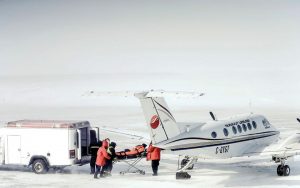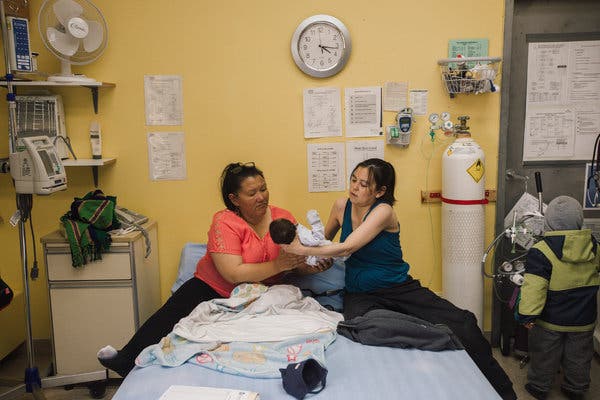Living in the Arctic, particularly in a post-colonialism world, often comes with a number of challenges. Those who live in the Arctic often face higher rates of poverty, lower life expectancies, and health disparities that do not reflect their national trends. Infant health, which has long been used as an indicator of the overall health of a region, is not exempt from the challenges of living in the Arctic.
When looking at infant health, it is important to look holistically at the issue. Community infrastructure, maternal health, education attainment rates, and poverty can all contribute to high infant mortality rates. It is also important to acknowledge the social norms of a community that may differ from western health standards, and respect the traditional knowledge of indigenous communities.
For this case study, we chose to look specifically at the Canadian territory of Nunavut because of the notably high difference in Infant Mortality Rate between the territory and the rest of Canada. For this analysis, we are looking at the reasons for such a high discrepancy in health and ways to address this problem effectively.
Key Background Information:
- Infant Mortality Rate (IMR) is the number of infant deaths per 1,000 live births
- IMR is often an indicator of overall health in a community, often showing unmet needs of sanitation, infrastructure, medical services, nutrition, and education
- High IMR across indigenous communities in the Arctic but particularly high in Nunavut, Canada
- Nunavut currently has an IMR that is five times that of the Canadian national average

Current Health Concerns:
- A number of regions in Nunavut are only accessible by air or sea: 45% of births occur out of the territory
- Many citizens need to take an airplane to receive sufficient medical care, which is financially and logistically limiting
- Healthcare needs are not being met: currently there is a high demand for healthcare workers and hospitals that can provide adequate health services
- High rates of poverty, lower educational attainment, and the average maternal age trending low all increase the rates of infant mortality
Current Actions & Challenges:
- Small scale training programs for new healthcare workers in Nunavut
-
- these programs are limited by a lack of funding and available workers in the territory
- has a potential to meet the high demand for healthcare workers but still limited by a lack of infrastructure in the region
-

Limitations To Our Knowledge:
- Currently there are large gaps in the research that prevent access to a fully comprehensive understanding of the problem
- A language barrier makes it difficult to work with the communities to both understand and address the problem
- Small populations and land that is difficult to access means small sample sizes in research

A medical airlift out of Nunavut (Paul Annigat via UpHere, 2018)
Policy Recommendations:
- Build more birthing centers and hospitals:
-
- work with national agencies and local government to allocate funding and create a plan for its continuation
-
- Establish medical training programs:
-
- Partner with private institutions that will work with local hospitals to incentivize young medical students to study and work in rural areas
- Give students experience in rural areas and a place to live in communities
-
Watch a lecture on this topic to learn more:
[ensemblevideo version=”5.6.0″ content_type=”video” id=”056221a8-ca6a-41f9-a9b6-cf46136a8737″ width=”412″ height=”360″ displaytitle=”true” autoplay=”false” showcaptions=”false” hidecontrols=”true” displaysharing=”false” displaycaptionsearch=”true” displayattachments=”true” audiopreviewimage=”true” isaudio=”false” displaylinks=”true” displaymetadata=”false” displaydateproduced=”true” displayembedcode=”false” displaydownloadicon=”false” displayviewersreport=”false” embedasthumbnail=”false” displayaxdxs=”false” embedtype=”responsive” forceembedtype=”false” name=”Robyn Walker-Spencer Infant Health in Nunavut”]
